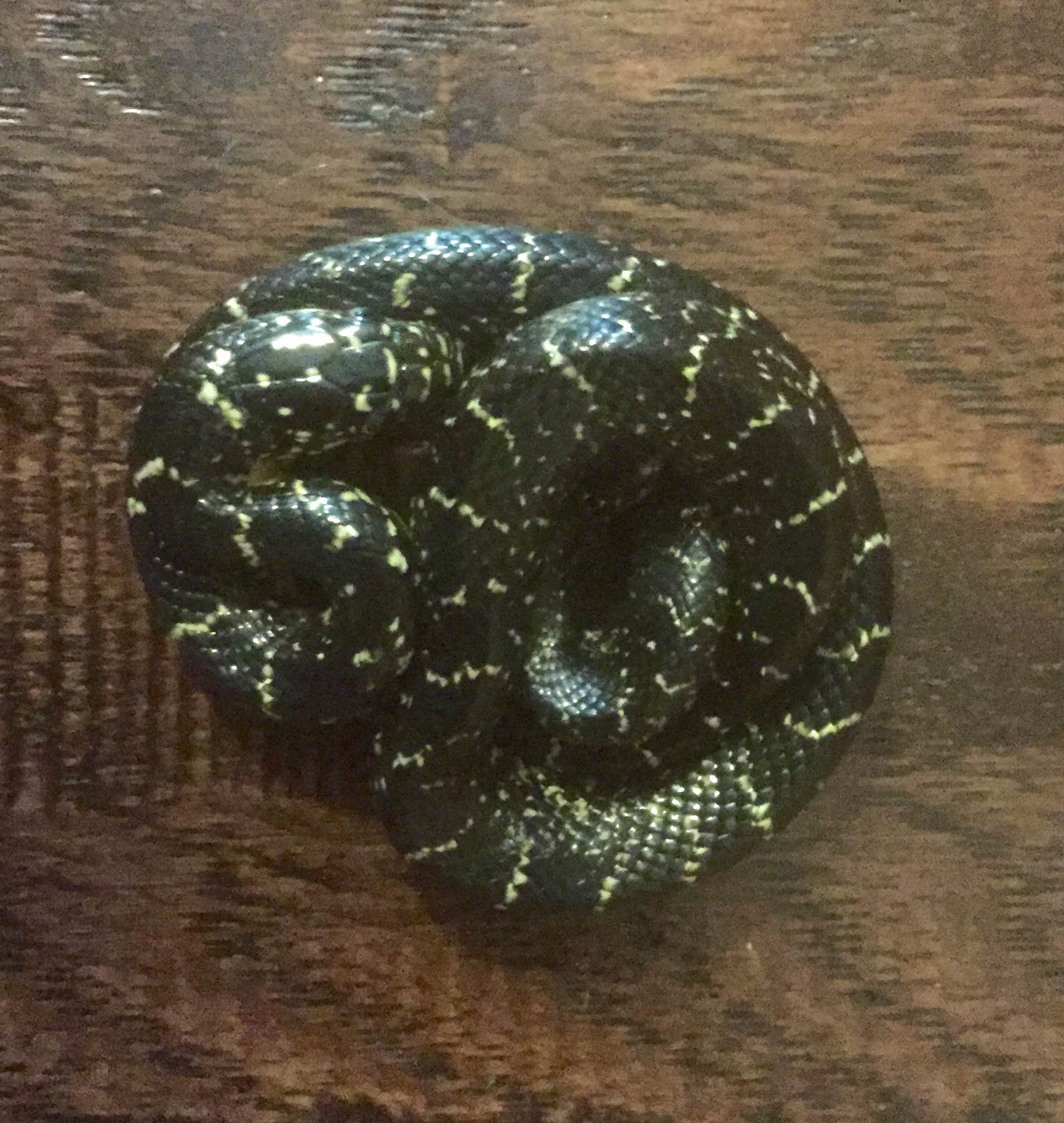Common Kingsnake (Lampropetis getula)

- Weight: 2-5 pounds
- Length: 20″-78″
- Diet: Carnivorous, eating birds, rodents, and small animals.
- Breeding: Starts in March through July.
- Gestation: 60-75 Days.
- Reproduction: 5-17 eggs, hatchlings appearing starting in late summer or early fall.
- Habitat: Urban areas with the availability of food water and shelter, tree hollows, drainage ditches, under sheds, and dense green spaces. Common around urban dwellings.
- Legal Status: Common throughout Florida, and under no protection. It is illegal to harm, capture, or remove from the wild.
- Other Names: Speckled kingsnake, eastern kingsnake, chain kingsnake, or striped kingsnake.
- Interesting Facts: The common kingsnake is one of the most common snakes found around human dwellings. They are excellent climbers, and commonly found in homes. To thwart a perceived threat, they will rattle their tail, whipping it back and forth, mimicking a rattle sound, as if a rattlesnake. They can be aggressive.
The common kingsnake, often referred to as the black snake or speckled kingsnake, is one of the most common snakes found in Florida. They are excellent climbers, and can even use mortar lines in between bricks to gain access into a home. The largest threat this snake will cause, is the injury you may receive if you trip while running away.
As a defense mechanism, the common kingsnake snake will rattle its tail, or vibrate it fast enough to produce a rattle sound, even though not a rattlesnake. They can grow very large, as we have found them up to 6′ ft in length. They are found throughout the entire State of Florida. Common kingsnakes will hiss and strike if too close or agitated, so it is best to keep your distance. Common kingsnakes will often feed on rodents, birds, and other small mammals and can live up to 20 years in the wild.
